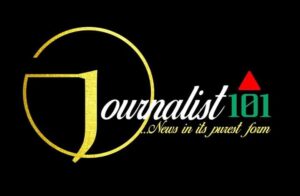Something is missing on these shelves. Do you know what it is? This is all that is on display to the public when it comes to the Chicago State University Archives for yearbooks and school newspapers. It should be noted that the newspapers in the bottom right corner, represent all that remains of the 35-plus years the newspaper TEMPO was published. The newspaper was shutdown in 2009 by CSU administrators. One notable copy of TEMPO is on the top, an issue when U.S. President Gerald Ford gave the 1975 commencement address. The issue itself is in poor condition and has what appears to be coffee stains on it. It was given to the new archivist recently hired by CSU two months ago. Photo by Jcoydenreports.
University archives are designed to provide research, administrative, historical and educational services to members of the public who are trying to learn about the university or various related subjects. So what does it say about a university when that mission is not only unsuccessful, it is impossible. The archives at Chicago State University are an embarrassment and Illinois taxpayers should be enraged to see where their money is going or not going towards.
According to the Society of American Archivists, the reference and research area should be “supervised and restricted.” At Chicago State it is neither. On two separate occasions this week, I walked into the archives area at the Gwendolyn Brooks Library on the north end of the campus through a wide open door. Located on the third floor, I sat down at a desk and started going through reference materials unmolested. About 15 minutes later, a man emerged from an office further down the hall and asked if I needed help. He was shocked to see me just sitting there undetected and rummaging through a pile of old newspapers. The only reason he came out was because he was going to the restroom located nearby. I explained to him that I was looking for newspapers, yearbooks and graduation programs from the late 1970’s era as I was doing some research related to that time period (FREE Journalism Tip: don’t say I wanna see if I can find proof President Bola Tinubu actually graduated from here in 1979). To his credit the gentleman was quite helpful and honest about the situation. He walked over and pointed at the shelves I had already discovered and said, “it looks like this is all that we have,” his own disappointment showing on his face. I would learn through our casual conversation that he had only recently been hired as the new university archivist, two months to be exact, and that the CSU archives have been closed for the past two years due to the COVID pandemic and a position vacancy.
He confirmed for me what Mr. Jimmy, @diisa2002 on Twitter (X), a well-meaning Nigerian that wants the betterment of his home country, had previously reported earlier in the week. The 1979 Chicago State University Emblem yearbook is missing from the one place it should always be. How is it a coincidence that nearly every yearbook but the one everyone in the world is looking for is missing? According to CSU records I was able to obtain, there were about 500 copies of the Emblem printed that year. It hasn’t been checked out of the library because it is kept in the reference area, where books are not allowed to leave from. Allegedly at least. The newspapers and yearbooks, without any security devices on them, could have easily been slipped into my bag and out the door if I had nefarious intentions. Did someone with evil intentions see the same thing I saw and decided to take the opportunity? Or was this book intentionally removed by a person or entity with something to hide? Valid questions I guess, but I try not to get into conspiracy theories.
I found myself slipping out of reporter character and assisting the nice gentlemen who was working there, who I could tell was overwhelmed. Yes, I was working as a journalist on a big story, but I also want to preserve the written history, culture and important work done by CSU students and scholars. Their work is in that area, including mine. I was in a quagmire, but morally I felt it was important to give him a bit of assistance before I continued on with my professional research.

This October 1, 1997 issue of the now defunct Chicago State University TEMPO newspaper will always have a special place in my heart. Thank God my AP Style writing got better too.
Perhaps the most emotional moment for me came as I was going through the remaining copies of TEMPO. About midway through the stack, one issue stuck out to me for some reason. It wasn’t a full newspaper, only about half of it, but the article looked familiar to me. I pulled it up closer to my aging eyes to get a better view and was stunned. This is something that I had been searching for over 20 years. It was the first article I had ever written as a journalist. I had lost my copy some years back. For my first assignment in 1997, I interviewed local legendary reporter Warner Saunders when he visited CSU. Myself and other TEMPO alums have long suspected the University intentionally destroyed a lot of our work. This issue itself was in pretty good shape, unlike the others which had begun to fade and turn yellow because they are not being properly stored. After reading each word, I reached in my pocket and took a photo with my phone before gently placing the issue back into the pile where I found it.
As I continued to search for any historical documentation about Tinubu in 1979, I inquired about commencement programs. Could it be possible I would find his name in there because he graduated with honors, according to documents turned over by CSU attorneys during this week’s deposition. While not an official record of a student’s graduation (they have my name in the 1999 program and I neither graduated nor went to the ceremony that year for Christ’s sake), they can be used to help either help bolster the Nigerian President’s claim or refute it. I was told once again, “that’s all we got.” It was a pitiful pile, smaller than the newspaper stack and once again in no particular order. Most of them were just programs from honors ceremonies. The new archivist, suggested I visit the Provost’s office in the administration building to see if I could find some there. I thanked him for his time and made my way to the Cook Administration building. A receptionist informed me that she did indeed have some, but they were only from recent years, the past five or so. She also said she had stopped sending them over to the university archives because there was nobody working there. She was happy when I informed here there had been a new hire.






